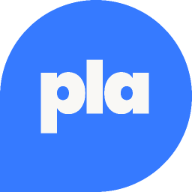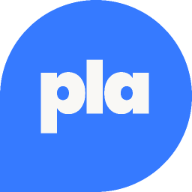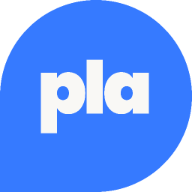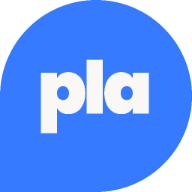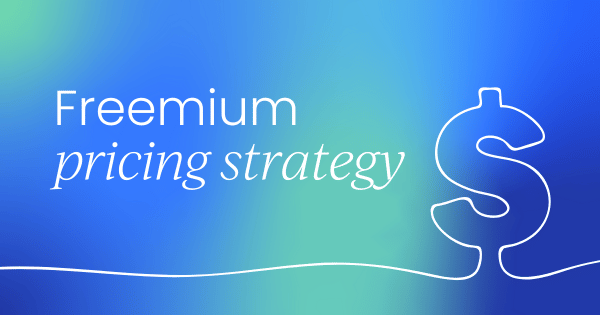Defining the freemium pricing model
The freemium model is a pricing strategy where a company offers a basic version of their product or service for free, but charges for additional features or functionality.
It's a way to get users hooked on a product before asking them to pay for it.
Essentially, the goal of the freemium model is to let your product do the talking, and once your users take certain actions, gently pushing them towards paid plans.
This allows you to gain product-qualified leads (PQLs) while reducing your marketing and sales costs.
Let us give you an example: Spotify, the music streaming service, uses a freemium model. You can listen to millions of songs for free – but some features are limited, meaning you'll have to listen to ads, and can't skip tracks.
If you want to enjoy uninterrupted music and gain the ability to skip songs, you'll have to pay for the premium version. It's like they're saying, "Hey, we'll let you listen to the Backstreet Boys for free, but if you want to skip to NSYNC, you gotta pay."
Now, we know what you're thinking: "Why would anyone pay for something they can get for free?" Well, that's the beauty of the freemium model.
By offering a free version, companies can attract a large user base and create brand loyalty. And once your product is embedded in the day-to-day of your users, they’ll be more likely to pay for the premium version.
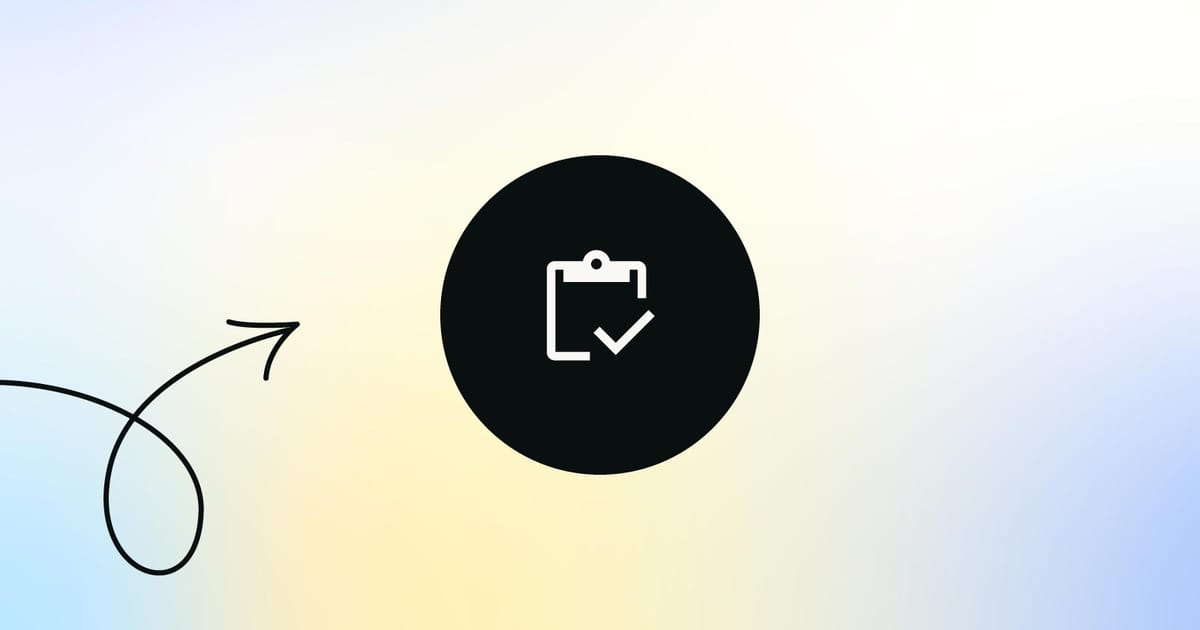
Is freemium just a free trial?
While the freemium model may seem like a free trial, there are some key differences.
Freemium products are free to use forever, but may have a limited number of features, whereas free trials allow users access to the full product experience but only for a short period of time (e.g. a week, month, or quarter).
Freemium models allow users time to fall in love with your product, and crave the benefits of the premium version. On the other hand, free trials allow users to explore your product’s full functionality allowing them to quickly understand the scope of your product and decide if it’s right for them.
But some product leaders argue free trials aren’t always long enough for users to make use of all the features in a complex product.
In some cases, businesses may choose to combine these approaches. By offering users a free trial of the paid version of a freemium product, users will experience what they’re missing out on, and may be more likely to convert to a paying customer.
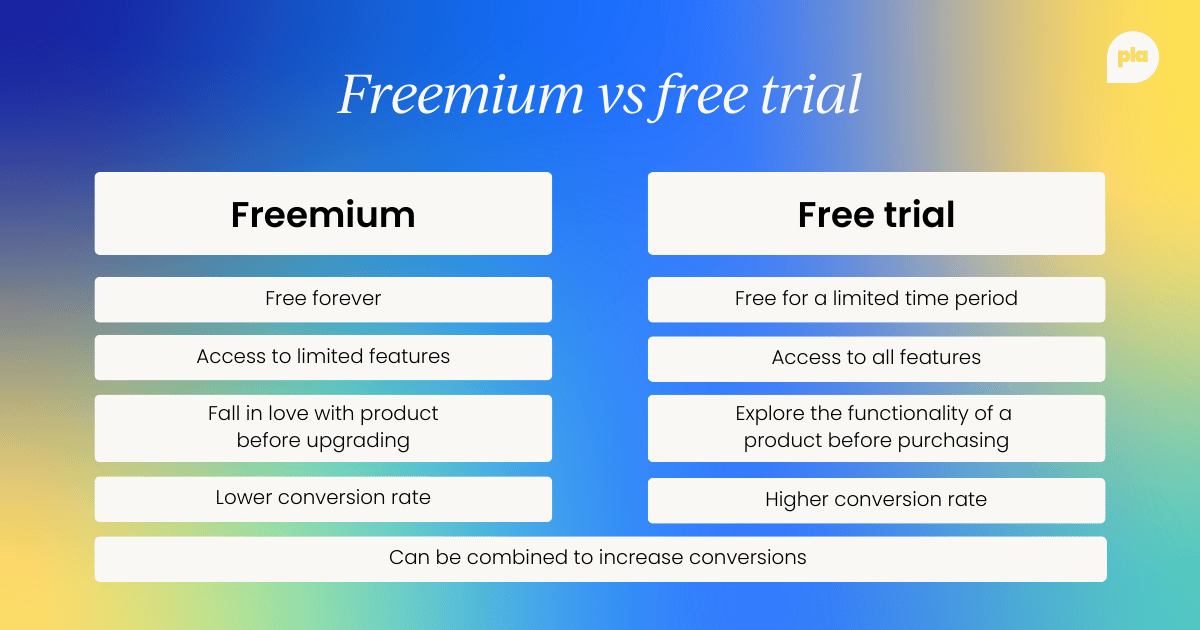
Freemium vs PLG: What's the difference
Both product-led growth (PLG) and freemium approaches are popular strategies for acquiring customers, but they differ in one crucial area.
Where freemium relies on offering a limited version of a product for free, product-led growth focuses on providing users with a full-featured product that showcases the value of the product and encourages adoption.
The PLG business strategy is where the product itself is the primary means of acquiring, converting, and retaining customers. In other words, the product sells itself. Essentially, you’re building a self-sustaining growth engine that's driven by customer satisfaction and loyalty.
Freemium pricing models are often used alongside PLG strategy to increase growth, but this approach to pricing isn’t the only option for PLG companies.
In short, PLG is a full business strategy that puts product quality and user experience front and center, whereas freemium is a pricing strategy that qualifies users based on their usage of the free offering.
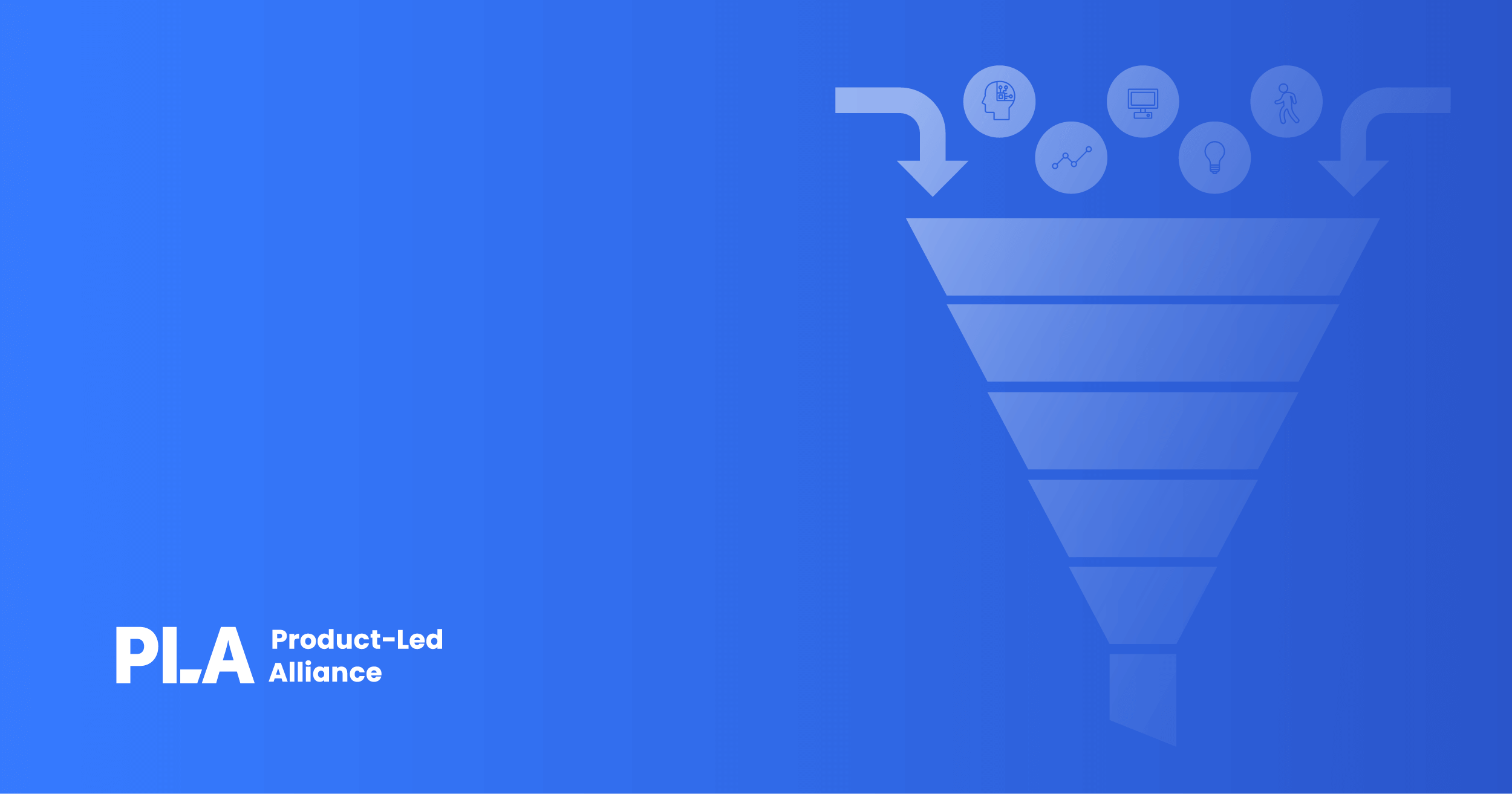
Pros and cons of the freemium model
Pro #1: Attracts users quickly and easily.
When your product is free to use, you’ll easily attract a ton of users to your platform. After all, there’s no upfront cost or risk to them trying out your offering. This also decreases your customer acquisition costs (CAC).
Pro #2: Allows users to try out a product before buying.
Users can try out your product and ensure it’s right for them before committing to a paid version. This means customers already know what to expect, and are less likely to have missed expectations, increasing their loyalty.
Pro #3: Generates revenue from both free and paid users.
By introducing ads to your product’s free version, you can generate revenue from free users and incentivize them to convert to a paid plan, as well as generating revenue from those already on the premium version.
Pro #4: Increased brand value from word-of-mouth.
As you gain more power users, you’ll also gain word of mouth recognition and referrals, boosting your brand awareness and image to a wider audience. This organic attention will increase trust in your brand.
Con #1: May attract low-quality users who have no intention of paying.
Many of your users will never convert to a paid plan, they may sign up just to do one thing and leave. So your business model must be able to support the free version from the paid revenue.
Con #2: Tricky to balance free and paid plans.
Balancing the free and premium versions of your product can be challenging. Too little in the free version and you won’t attract new users, but too much in the free plan and users won’t convert to paid.
Con #3: Can be difficult to convert free users into paying users.
The average conversion rates from free plans to paid plans are a measly 5-10%. This highlights the challenges many companies face when increasing their premium user base.
When they’re already getting what they need for free, your paid offering has to be valuable enough to your users to justify the cost.
Con #4: May not be sustainable in the long run.
With the previous cons in mind, this business model isn’t sustainable for every company long term. We’ll discuss the types of products this system works best for later, but if you’re struggling to convert users, your company will struggle as revenue stagnates.
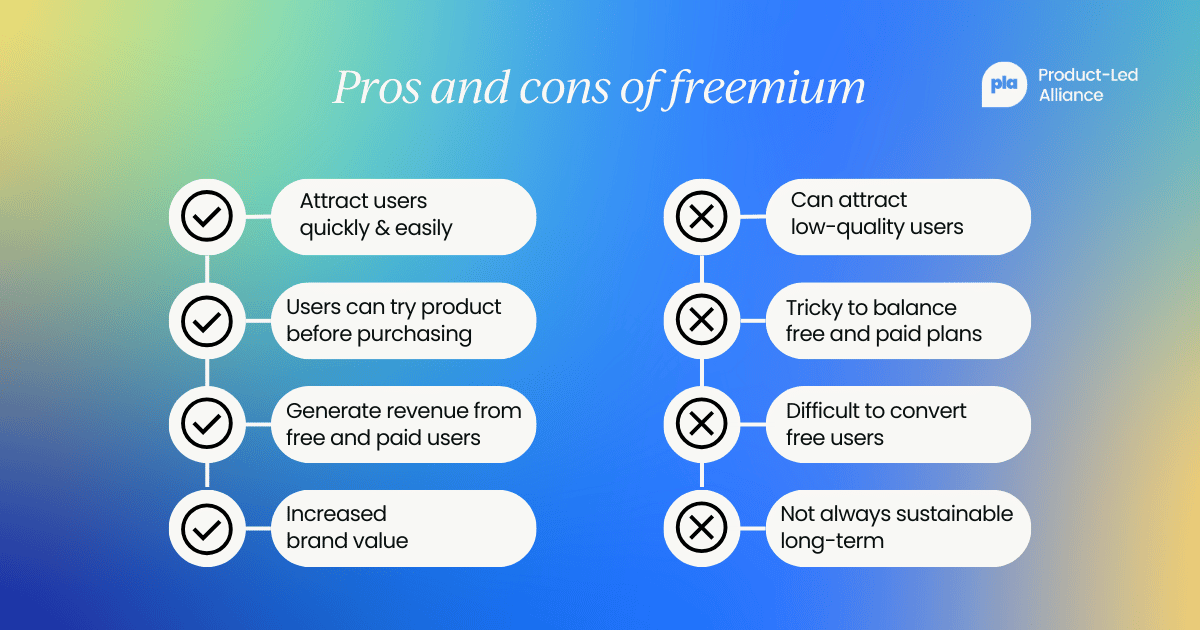
4 best practices for a freemium pricing strategy
To ensure freemium success at your organization, consider these four best practices:
1. Know your customers
Market research is a huge part of any product strategy, but especially when building a freemium model. You’ll need to know your customers inside out, so you can build your offering.
You need to understand what your customers are willing to pay for, and what minimum features are required to keep free users coming back.
If you don’t spend enough time researching your customers, you may end up with a premium feature set that no one wants, or worse, give away your most valuable feature in the free plan.
These mistakes are costly, as removing free features can break the trust of your customers, causing them to churn before their first purchase.
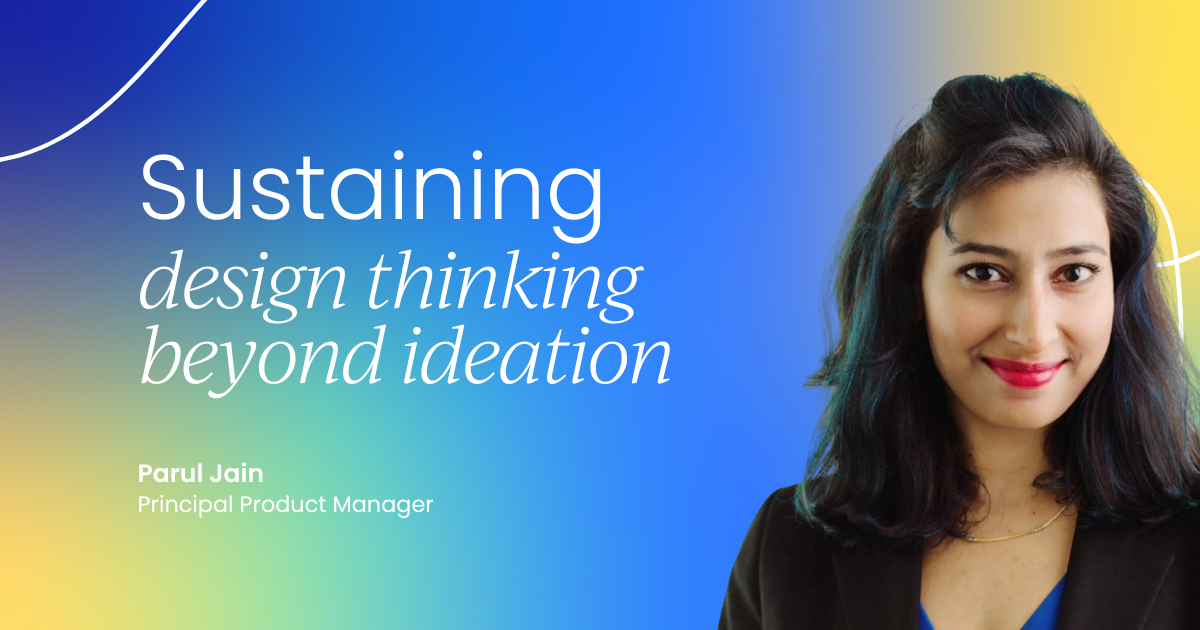
2. Clear product messaging
To gain the coveted word of mouth marketing we mentioned earlier, your product has to meet your users' expectations (or, better yet, exceed them).
A key component of this is ensuring your messaging is clear to your customers. If they expect life-changing benefits from your free product, only to realise they need to pay an arm and a leg to use those features, they’ll leave feeling justifiably disappointed.
Or if it’s unclear what the benefits of upgrading are to free users, they’ll continue using the free version, without realising the true value of your premium features.
That’s why it’s key to do two things:
- Clearly share the value of your offering and highlight why the paid plan is worth it.
- Don’t overhype your product (some hype is warranted, but too much leads to disappointed users).
3. Have a cost buffer
Customer acquisition takes time, especially when using a freemium model. It may take months for your first free users to convert to paying customers.
But while you’re trying to acquire these customers, your business still has outgoing costs. Many freemium businesses fail because they don’t have a buffer set aside to account for this period.
Your product could be best-in-class, and your users may rave about it, but none of that matters if you can’t keep the lights on while you build your customer base.
4. Get your pricing right
Lastly, it’s important to ensure your pricing structure is right for your business. The revenue from your paid users needs to support your paid and free users, while being profitable.
Should you have multiple paid tiers, or just one? How much are your customers willing to pay? How many paid customers do you need to support your business?
There are lots of factors to consider when crafting your pricing bands for a freemium product, so don’t rush it.

How to convert free users
There are many ways to convert free users to your premium plan. Here are some of the most common conversion strategies:
- Provide value: To ensure users want to make use of your free version in the first place (then move onto your paid version) your product has to provide actual value to your customers. And the paid version must provide enough additional value to warrant the cost.
- Ensure value is communicated: Providing value isn’t enough though, users have to understand the value of upgrading, so it’s important to communicate this value through your platform’s messaging.
- Share customer testimonials: Social proof from happy premium customers can be a useful tool in convincing free members to upgrade, especially if the user relates to the case study.
- Allow access to premium features for a limited time: As we discussed earlier, offering free users limited-time access to premium features may be enough to see the value in your paid offering.
- Offer deals or discounts: In general, people love getting a bargain, so use this to your advantage by offering discounts or deals to convert users. Plus, making it time-limited adds a layer of urgency that pushes users to buy.
Is freemium right for your business?
The freemium business model isn’t right for every company. Here are some things to consider before restructuring your entire pricing strategy to go freemium.
What’s your revenue model?
Some revenue models are more suited to freemium than others. Typically, freemium products use subscription-based pricing models, as this allows them to achieve higher customer lifetime value (LTV).
On the other hand, freemium is less suited to companies looking for one-off purchases as it’s unlikely you’ll generate enough revenue to support your paid and free users.
Who are your customers?
Your target audience is another factor to consider when going freemium. Customer expectations, budget, and risk aversion may impact your decision.
Consider these examples:
- Students – This group often has low disposable income, so may never convert to your premium product if it’s only needed for college. But if your product can be used post-graduation, their loyalty and increased income may increase conversions.
- Small businesses – Again, small businesses may not have the budget for a premium plan, so you may struggle if this is your main ICP.
- Risk-adverse customers – If your customers are particularly adverse to risk, freemium is a great option as they can try your product before using it.
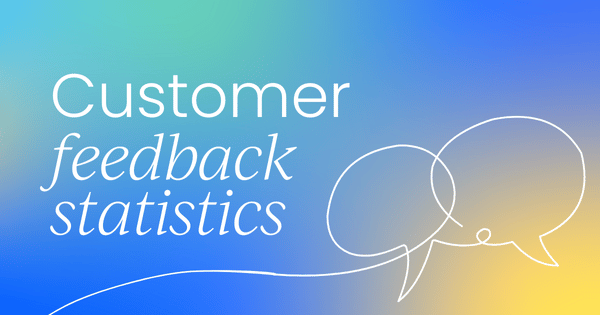
How big is your market?
If your total addressable market is quite small to begin with, it’s likely freemium isn’t right for your org. Conversion rates for freemium products are low, so when you’re already limited in market size, you shouldn’t offer your product for free.
By doing so, you’d be shooting yourself in the foot, as instead of monetizing as much of your market as possible, you’d be limited to converting 5-10% of your free users.
To summarize: freemium models work best in large markets with lots of potential customers.
Is your product built for self-serve?
Freemium products typically operate on a self-serve model, with limited sales team interference. So, it’s important to consider if this sales funnel is right for your product.
The more complexity involved in your product, the more likely it is that a sales rep is required to explain the value of your product to customers.
Likewise, the more expensive your premium plan is, the more likely customers will require an extra helping hand from your sales team.
There are always exceptions, but for the most part, freemium products should be easy to find value in and affordable.
Is there a reason to upgrade?
As we’ve made clear throughout this article, if there’s no reason to upgrade, your users won’t.
So ensure your users will be willing to pay for premium features before committing to a freemium model.
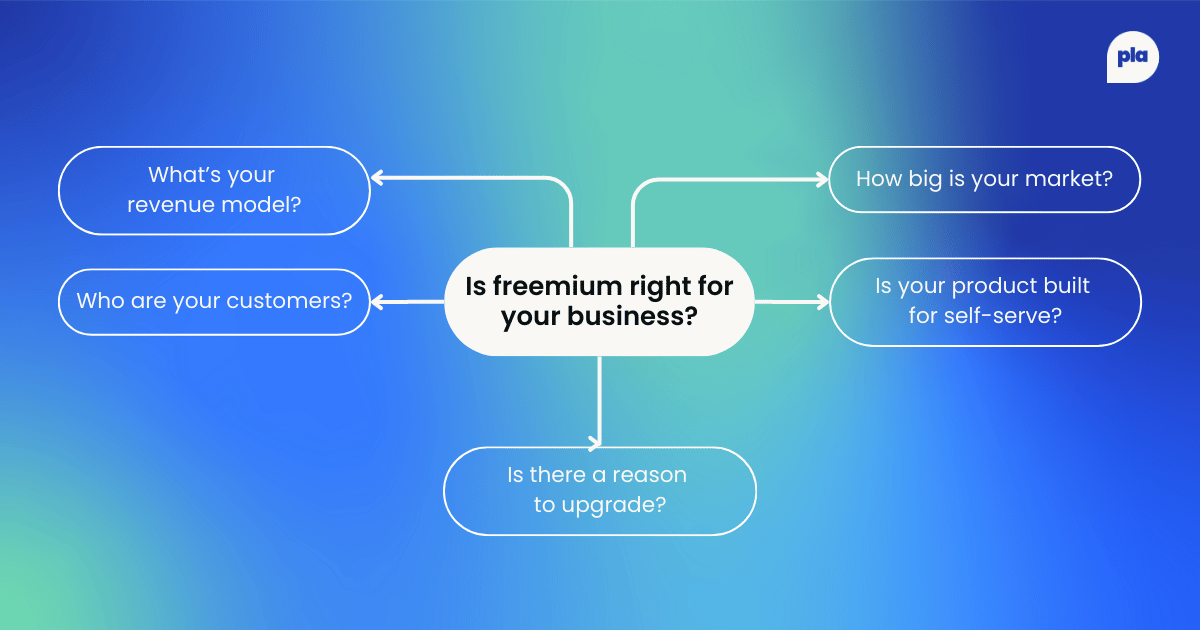
5 real-world examples of freemium models
Canva
Canva is a browser-based design tool that offers a free alternative to Adobe Photoshop for non-professionals. But you can choose to upgrade your account to access advanced design tools, premium templates, and a stock-image library.
Popular with students, teachers, and consumers creating a one-off project, the software is easy to use with an intuitive user interface (UI) and a range of templates.
But Canva’s success comes from also targeting businesses and marketing professionals who are more likely to require premium features. This strategy led the org to a $40 million valuation in 2021.
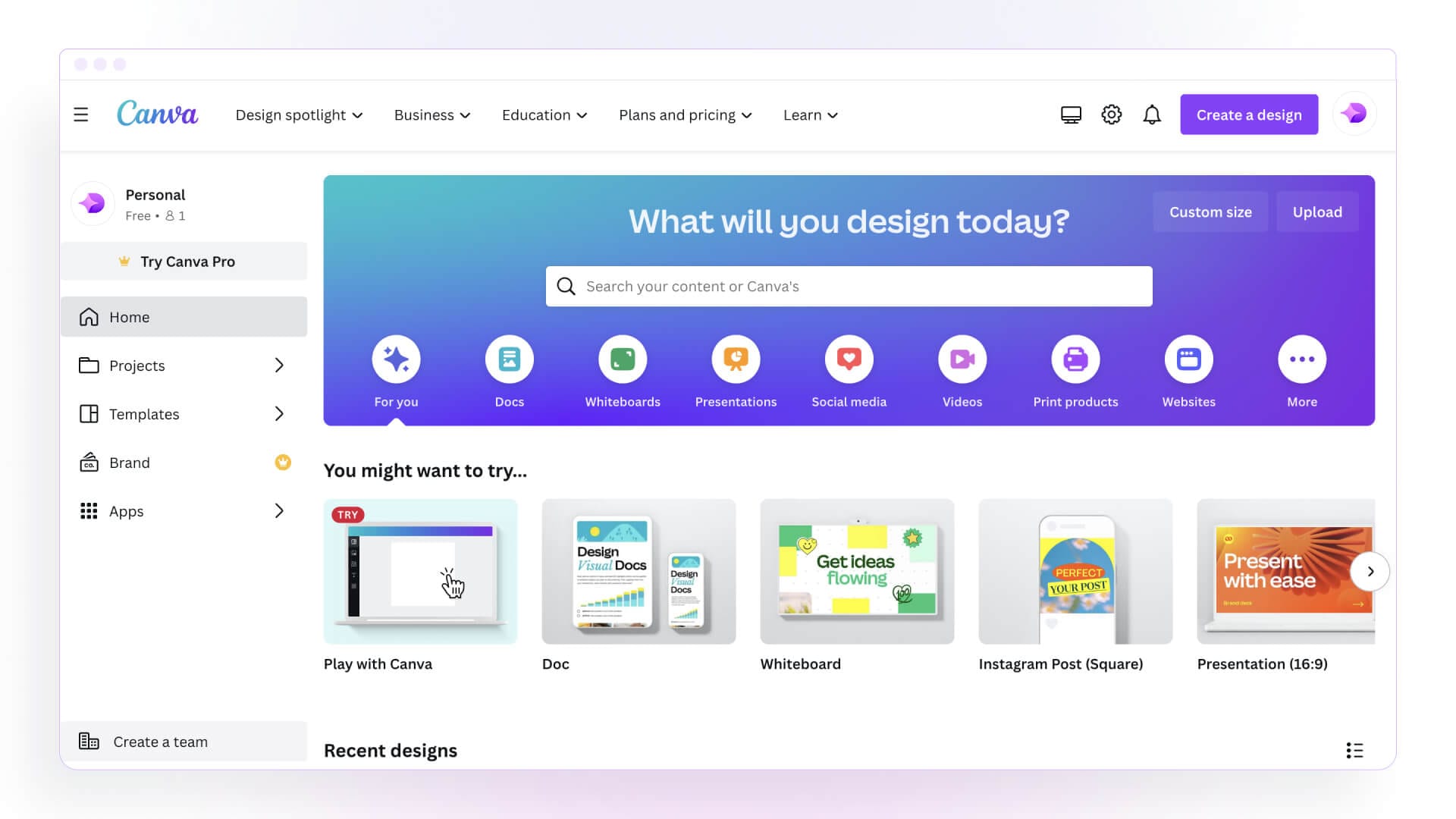
Duolingo
Duolingo is a gamified language-learning platform that offers courses in numerous languages, including Spanish, French, German, and Chinese. While many recognise Duo’s unhinged meme-based marketing tactics, it’s the org’s freemium approach to language learning that sets them apart.
The platform's success comes from its impressive free tier, allowing users to access all courses and complete entire language programs without payment. This approach has helped Duolingo become the world's most popular language learning app, with 24.2 million daily active users and 5.8 million paid subscribers as of Q3 2023.
The freemium strategy generates revenue through its Super Duolingo subscription, which removes advertisements, enables offline access, and provides additional features for progress tracking.
This strategy has driven impressive financial performance despite less than 10% of users choosing to subscribe. The company reported $137.6 million in revenue for Q3 2023, representing 43% year-over-year growth, and validating its approach of prioritizing product quality and user growth before monetization.
Watch this breakdown of Duolingo's freemium strategy
Spotify
Spotify is a music streaming platform that offers users free access to its entire library of over 100 million songs. Users can upgrade to premium to improve their experience and unlock additional features.
Casual listeners are drawn in by Spotify’s free offering, while restrictions such as unskippable advertisements, inability to download for offline listening, and limited playlist control encourage heavy users to convert to paid subscriptions.
This strategy helped Spotify achieve over 626 million active users with 246 million premium subscribers – an almost 40% conversion rate! The company uses advertisements to monetize free users and showcase the benefits of upgrading to premium, drastically increasing the org’s monetization.
Slack
Slack is a team communication platform that transformed workplace collaboration. The service offers a free tier providing essential communication tools while strategically limiting message history to 10,000 messages.
The platform's success comes from the habits users build – once teams adopt Slack for daily communication, it quickly becomes essential. This drives its impressive 30% conversion rate from free to paid plans, significantly outperforming industry averages in the SaaS market.
Launched in 2014, Slack acquired over 500,000 active daily users in its first year through its product-led approach. The freemium model enabled bottom-up adoption, where employees introduce the tool to colleagues until organizational limitations of the free tier necessitate an upgrade to paid plans with complete message archives and advanced features.
This grassroots strategy has established Slack as a dominant player in workplace communication, demonstrating how providing substantial value in a free product can create a natural pathway to premium conversions.
Learn more about Slack's business model
Dropbox
Dropbox is a cloud storage company that offers users a free account with limited storage space, with the option to upgrade to a paid subscription for additional storage and features. The company's freemium model has been successful in attracting a large user base, with over 700 million registered users as of 2023.
By offering a free version of their service, Dropbox was able to gain widespread adoption and establish itself as a leader in the cloud storage market. As users' storage needs grew, many opted to upgrade to a paid subscription to access additional features such as more storage space, advanced security, and collaboration tools.
Wanna get involved in all the insights and discussion around freemium and PLG?
Join our 13,000+ Slack community of product pros and pioneers from all over the world to exchange ideas, and push each other to do great things!



 Follow us on LinkedIn
Follow us on LinkedIn